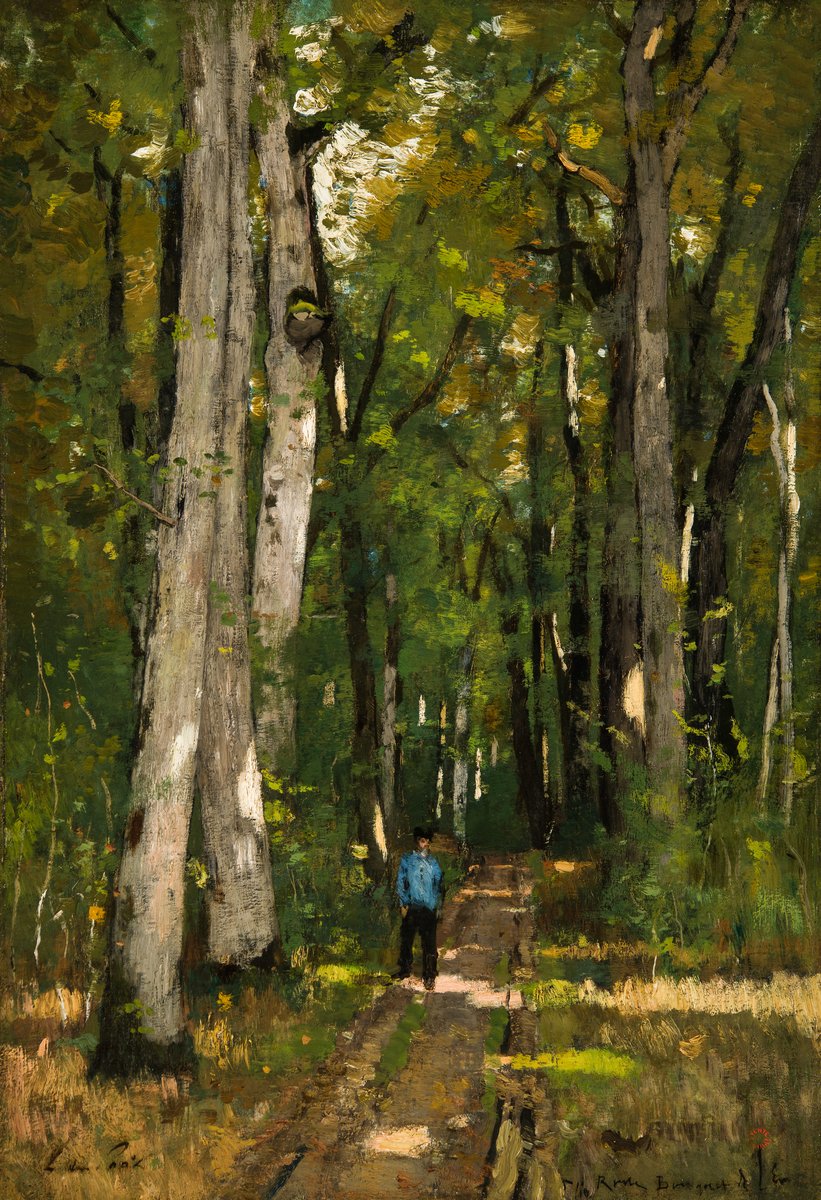
Road through the Forest of Fontainebleau
Collection of Paintings
| Artist | |
|---|---|
| Date | 1873 |
| Object type | painting |
| Medium, technique | oil, wood |
| Dimensions | 99.7 × 80.3 cm |
| Inventory number | 4647 |
| Collection | Collection of Paintings |
| On view | Hungarian National Gallery Building B, First Floor, Art in the 19th Century – Variations on Realism. From Munkácsy to Mednyányszky |
Munkácsy moved to Paris for good in 1872, upon the call of his friend and fellow artist László Paál. However, they parted in France since Paál settled in the village of Barbizon in the Fontainebleau forest, while Munkácsy stayed in Paris. Having set up for himself in Barbizon, Paál invited Munkácsy in a letter of 1873. Munkácsy accepted the invitation and stayed for a few months in the moody little sylvan village. Barbizon was made famous in the early nineteenth century by a group of French artists who substantially changed painting by advocating working in the open. In the pictures of Jean-François Millet, Gustave Courbet, Charles-François Daubigny, and Jules Dupré everyday scenes ― people working, strolling, travelling ― appear in a natural setting. The manner of painting also changed: the all-devouring gallery tone gave way to lightimbued colours and their tones to suggest atmospheric effects, the vibration of the air, the motion of light and shade. The Woman Carrying Brushwood was painted in Barbizon and was already the outcome of this fresh approach. The depiction of work-weary people without any beautifying is typical of realism, especially strongly represented without any lyricism by Courbet among the mentioned French artists. Munkácsy’s painting is slightly melancholic, though the tired face, the stooped body, and the rendering of the hand are tools of a representation devoid of idealisation. | Zsuzsanna Bakó
This record is subject to revision due to ongoing research.